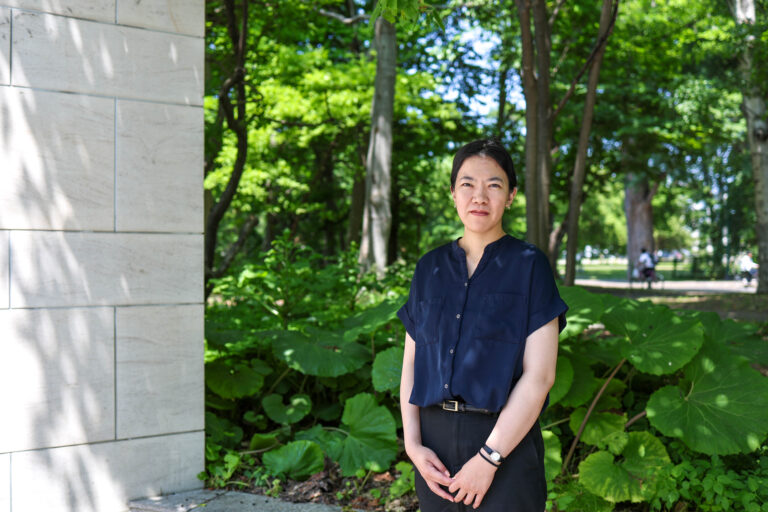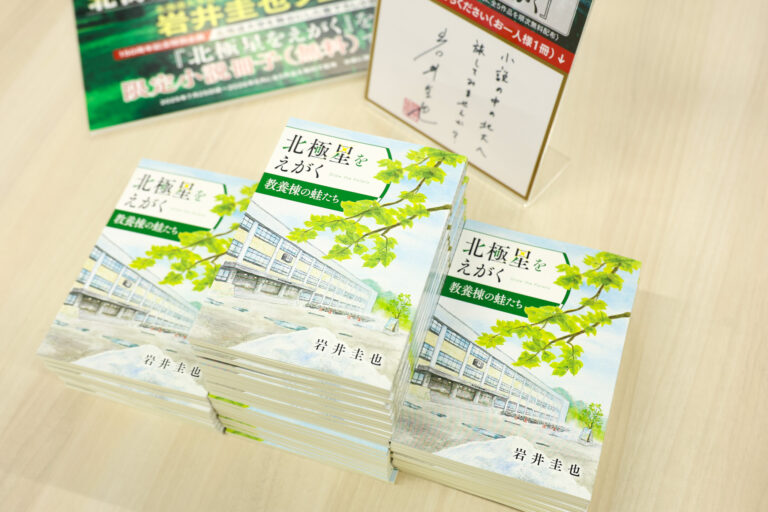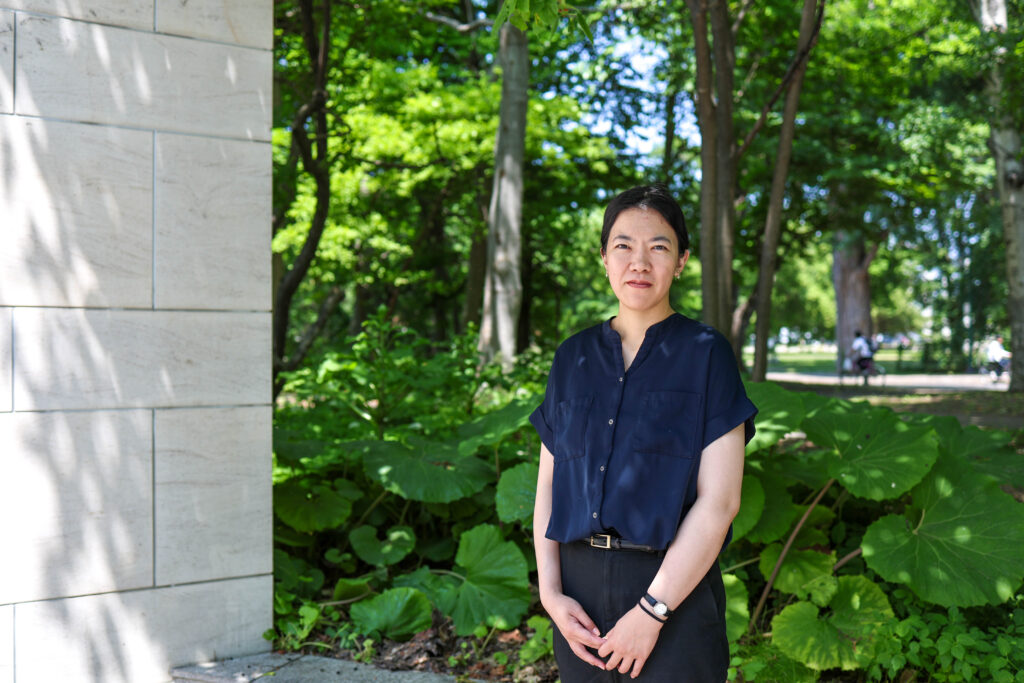This article was published in Japanese in Litterae Populi magazine (Autumn 2025, Vol. 75)
Creator Midori Iwama
Graduate of the School of Science and the Graduate School of Life Science
Midori Iwama became active as an illustrator and a small and mid-sized enterprise management consultant after conducting research at Hokkaido University’s Graduate School of Life Science and gaining overseas experience. With a deep love for animals and drawings, she conveys their charm through a scientific perspective and a rich sensitivity. She also illustrated the cover of “Drawing the North Star,” a serialized novel being published as part of the Hokkaido University 150th Anniversary Project. We spoke with Ms. Iwama about her journey and her current activities.

Midori Iwama
Born in Nagano Prefecture. Graduated from the School of Science at Hokkaido University in 2012 and earned her master’s degree from the Graduate School of Life Science at Hokkaido University in 2014. Started her own business in 2020, working as a small and mid-sized enterprise management consultant, web marketing specialist, and illustrator at Iwama Creative Office. Created all illustrations for the book “Amazing When They Open Their Mouths! A Guide to Creature Mouths” (Impress Corporation).
What was your childhood like?
I was born in Nagano Prefecture. I’ve always loved living creatures. As a child, I kept parakeets and Java sparrows and would catch loaches and crayfish in nearby streams. I also loved to draw, often secretly sketching Java sparrows and other animals in the corners of my notebook during class. In high school, books like Wild Animals I Have Known and King Solomon’s Ring sparked my interest in animal behavior, which led me to enroll in the School of Science at Hokkaido University.
What was your student life like at Hokkaido University?
In the lab, I conducted research on Java sparrow courtship dances. I observed how the dances changed depending on the sparrows’ gender and age in months. Since there was little prior research on this topic, I had to learn through trial and error. I belonged to the fishing club, where I enjoyed fishing at various locations in Hokkaido while drawing fish-inspired pictures. I also enjoyed making skeletal specimens of pigs’ feet and chicken wings as a hobby. I also made stuffed bird specimens for research. I was fascinated by how animal skeletons reflect the history of biological evolution and the life history of each individual.
How did you end up starting your own business?
After earning my master’s degree, I worked at an IT company and then joined an advertising agency, where I was in charge of web design. During that time, I continued drawing as a hobby and sold my handmade postcards and hand towels at art events. The turning point came in my late twenties when I went to Fiji for language study and experienced the Fijian way of life—easygoing and finding joy in everyday moments. I later went to Canada as well, where I freelanced while working various part-time jobs. Through these experiences, I decided to start my own business.
What kind of work do you do now?
Based in Asahikawa, I do web marketing, website creation, and business consulting as a small and mid-sized enterprise management consultant. I also create illustrations, mostly of animals. My past work includes illustrations for technical magazines on wild birds, general books about living creatures, and academic papers. I can draw illustrations that aren’t just approachable but are also biologically accurate, so I think my university studies in biology are really paying off.
Tell us about the cover illustration that you’ve created for Keiya Iwai’s “Drawing the North Star.”
I was approached by a professor who helped me during my student days in a lab at Hokkaido University. I was surprised because I never imagined I’d end up being involved in a novel for the 150th anniversary project. As I’d never worked on a novel cover, I thought it seemed interesting and definitely wanted to give it a try. Since the protagonist in the first volume is a first-year Hokkaido University student, I depicted the building of the Institute for the Advancement of Higher Education and the surrounding scenery. I included details that I think will make graduates feel nostalgic, such as muddy spring snow, bicycles, club signboards, and reflections of main street trees in the windows. I painted it in watercolor, and I think the translucent quality of watercolor suits the novel’s atmosphere.

Lastly, do you have a message for students at Hokkaido University?
In high school and prep school, there was a path set in advance to some extent, but once you enter university, you’re expected to make your own decisions. I hope you’ll choose your own path without making excuses. If you’re going to go with the flow, you might as well choose which current to follow. Hokkaido offers a lot of freedom, and it’s a place where people are more understanding than in big cities. I hope you’ll find a way of living that’s true to yourself.


